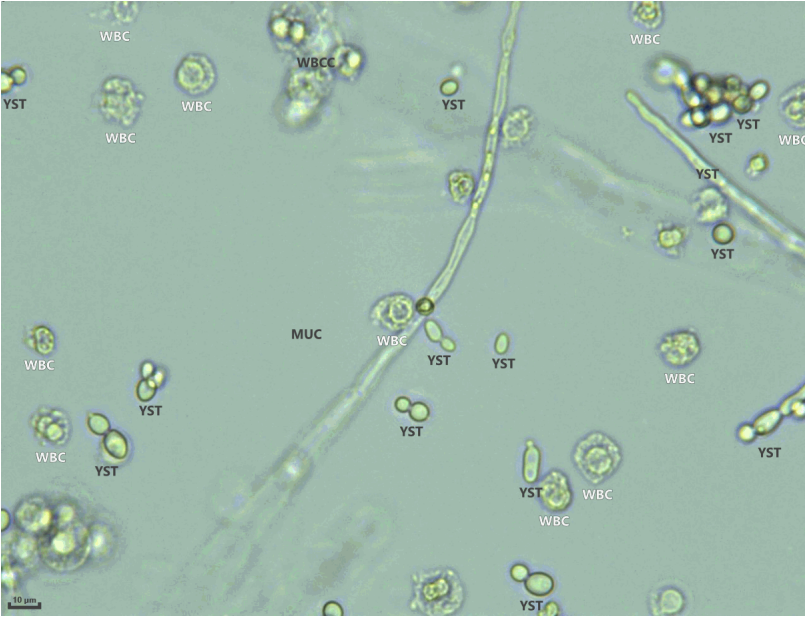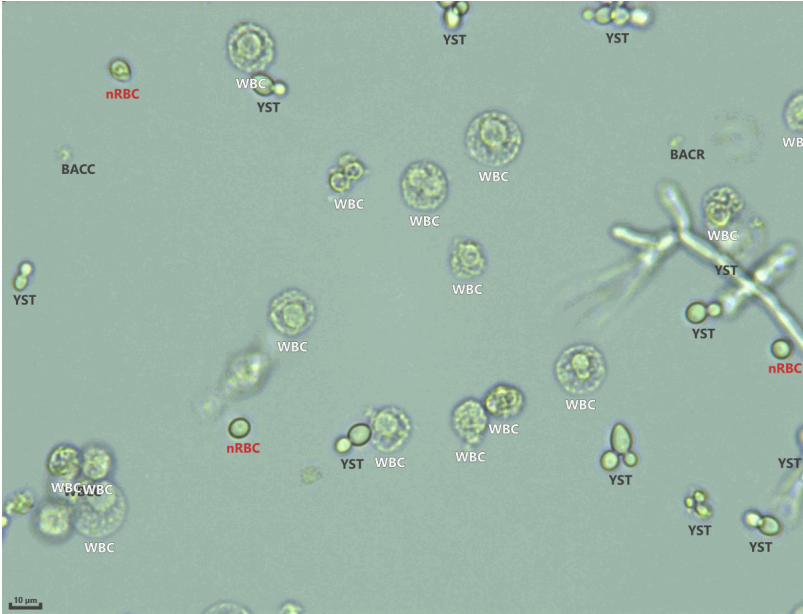Introduction
Fungal bezoar in urinary bladder is a rare pathological entity, of which less than 20 previous cases have been described in the literature since the first case was reported in 1961.1 Fungal bezoars are frequent in immunocompromised individual, hospitalized patients with multiple comorbidities and those with severe illness requiring admission to intensive care units. 2 Here, we present a case of Urinary bladder fungal balls without disseminated.
Case Presentation
In our case, we will discuss a case of urinary fungal bezoar infection that was severe enough to cause acute retention of urine, render the patient anuric. Our patient is a 54 year male, he had undergone bypass surgery two and half months before. Since his surgery, the patient was hospitalized for a long period i.e. for 10 -12 days and received broad spectrum antibiotics. The patient was kept on urinary catheter as it was difficult for him to mobilize. A week after his discharge from hospital, the patient felt bladder fullness and bilateral flank pain with anuria. Patient was relieved by catheterization and bladder irrigation.
Figure 1
Urine routine microscopy on automated analyzer showing yeast forms and fungal hyphae with pus (WBC) cells.

Figure 2
Urine routine microscopy on autoanalyzer showing fungal hyphae and yeast forms with RBC’s and WBC’s.

His urine routine microscopy on Transasia Laura XL Fully automated Urine analyzer reveals increased pus cells 194/hpf and RBC’s 27/hpf. Fungal hyphae and yeast forms were seen on microscopy (Figure 1, Figure 2).
We also received urine with flakes for histopathological examination. Grossly multiple dirty white color flakes altogether measuring 2.0 x 1.5 x 0.5 cm received. Microscopic examination shows necrosed tissue with dense mixed inflammatory cell exudate with many fungal colonies. These fungal colonies were aseptate hyphae and spores (Figure 3)
Discussion
Fungal Urinary tract infections are more likely to develop in patients with predisposing factors such as Urinary catheterization, ICU stay, use of broad-spectrum antibiotics, diabetes and glucocorticoids therapy. 3, 4, 5 Fungal bezoars can be found anywhere in the urinary tract, and so its clinical presentation depends upon site of the bezoars. Urinary tract obstruction at renal pelvis or ureteric bezoars might elevate renal function test and hydronephrosis. In such cases surgical intervention such as nephrostomy or ureteric stenting is usually necessary.6, 7 Previous case reports have shown fungal bezoars spreading to both pelvicalyceal systems causing bilateral renal obstruction at the level of renal pelvis and ureters leading to acute renal failure and anuria. 8, 9
Unlike simple bacterial or fungal UTIs, the treatment of fungal bezoars may require local intervention in addition to systemic therapy with antifungals. Fungal balls could be also directly extracted using flexible ureteroscopy, cystoscopy, PCNL or by surgical exploration in more complicated cases. 10, 11 Urinary microscopy and histopathological examination lead to definitive diagnosis. So as proper treatment of this condition would be essence to prevent further complications and to avoid the need for more invasive measures.
Conclusion
Fungal infections of urinary tract even though rare should always be kept as differential diagnosis in patient of persistent UTI, especially in susceptible populations such as hospitalized patients, or one with comorbidities. Urine routine microscopy and histopathological examination play a key role in early diagnosis on fungal bezoars and prevention of further future complication.


